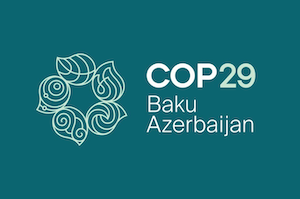By Stephen Wright for Radio Free Asia
Indonesia’s plan to convert over 2 million ha of conservation and indigenous lands into agriculture will cause long-term damage to the environment, create conflict and add to greenhouse gas emissions, according to a feasibility study document for the Papua region mega-project.
The 96-page presentation reviewed by Radio Free Asia was drawn up by Sucofindo, the Indonesian government’s inspection and land surveying company.
Dated July 4, it analyses the risks and benefits of the sugar cane and rice estate in Merauke regency on Indonesia’s border with Papua New Guinea and outlines a feasibility study that was to have been completed by mid-August.
- READ MORE: Plea to bar Prabowo from UK as Indonesian security forces crack down on Papuan rally
- Other COP29 climate reports

Though replete with warnings that “comprehensive” environmental impact assessments should take place before any land is cleared, the feasibility process appears to have been a box-ticking exercise. Sucofindo did not respond to questions from RFA, a news service affiliated with BenarNews, about the document.
Even before the study was completed, then-President Joko “Jokowi” Widodo participated in a ceremony in Merauke on July 23 that marked the first sugar cane planting on land cleared of forest for the food estate, the government said in a statement.
Jokowi’s decade-long presidency ended last month.
Excavators destroy villages
In late July, dozens of excavators shipped by boat were unloaded in the Ilyawab district of Merauke where they destroyed villages and cleared forests and wetlands for rice fields, according to a report by civil society organisation Pusaka
Hipolitus Wangge, an Indonesian politics researcher at Australian National University, told RFA the feasibility study document does not provide new information about the agricultural plans.
But it makes it clear, he said, that in government there is “no specific response on how the state deals with indigenous concerns” and their consequences.
The plan to convert as much as 2.3 million ha of forest, wetland and savannah into rice farms, sugarcane plantations and related infrastructure in the conflict-prone Papua region is part of the government’s ambitions to achieve food and energy self-sufficiency.
Previous efforts in the nation of 270 million people have fallen short of expectations.
Echoing government and military statements, Sucofindo said increasingly extreme climate change and the risk of international conflict are reasons why Indonesia should reduce reliance on food imports.
Taken together, the sugarcane and rice projects represent at least a fifth of a 10,000 square km lowland area known as the TransFly that spans Indonesia and Papua New Guinea and which conservationists say is an already under-threat conservation treasure.
Military leading role
Indonesia’s military has a leading role in the 1.9 million ha rice plan while the government has courted investors for the sugar cane and related bioethanol projects.
The likelihood of conflict with indigenous Papuans or of significant and long-term environmental damage applies in about 80 percent of the area targeted for development, according to Sucofindo’s analysis.
The project’s “issues and challenges,” Sucofindo said, include “deforestation and biodiversity loss, destruction of flora and fauna habitats and loss of species”.
It warns of long-term land degradation and erosion as well as water pollution and reduced water availability during the dry season caused by deforestation.
Sucofindo said indigenous communities in Merauke rely on forests for livelihoods and land conversion will threaten their cultural survival. It repeatedly warns of the risk of conflict, which it says could stem from evictions and relocation.
“Evictions have the potential to destabilize social and economic conditions,” Sucofindo said in its presentation.
If the entire area planned for development is cleared, it would add about 392 million tons of carbon to the atmosphere in net terms, according to Sucofindo.
That is about equal to half of the additional carbon emitted by Indonesia’s fire catastrophe in 2015 when hundreds of thousands of acres of peatlands drained for pulpwood and oil palm plantations burned for months.

Indonesia’s contribution to emissions that raise the average global temperature is significantly worsened by a combination of peatland fires and deforestation. Carbon stored in its globally important tropical forests is released when cut down for palm oil, pulpwood and other plantations.
In a speech last week to the annual United Nations climate conference COP29, Indonesia’s climate envoy, a brother of recently inaugurated president Prabowo Subianto, said the new administration has a long-term goal to restore forests to 31.3 million acres severely degraded by fires in 2015 and earlier massive burnings in the 1980s and 1990s.
Indonesia’s government has made the same promise in previous years including in its official progress report on its national contribution to achieving the Paris Agreement goal of keeping the rise in average global temperature to below 2 degrees Celsius.
“President Prabowo has approved in principle a program of massive reforestation to these 12.7 million hectares in a biodiverse manner,” envoy Hashim Djojohadikusumo said during the livestreamed speech from Baku, Azerbaijan.
“We will soon embark on this programme.”
Prabowo’s government has announced plans to encourage outsiders to migrate to Merauke and other parts of Indonesia’s easternmost region, state media reported this month.
Critics said such large-scale movements of people would further marginalise indigenous Papuans in their own lands and exacerbate conflict that has simmered since Indonesia took control of the region in the late 1960s.
Republished from BenarNews with permission.

